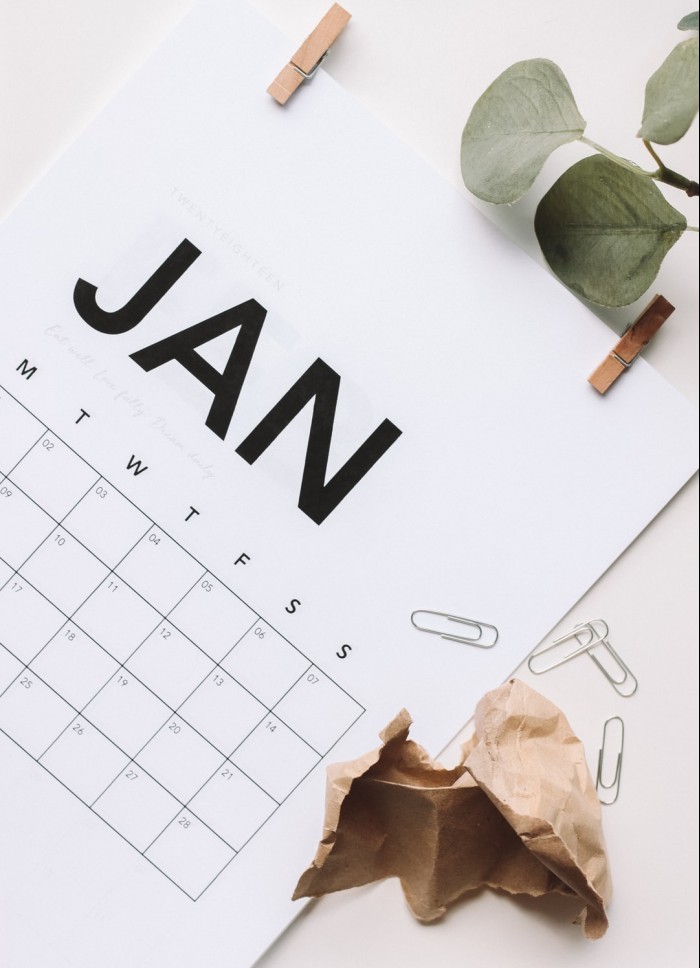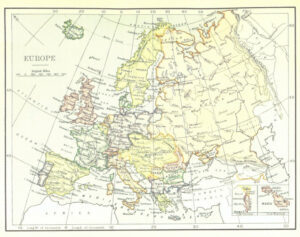You have to leave the house in five minutes! Your youngest begs for help to put on his shoes and your eldest has just announced he can’t find his homework. You’re scolding your children while you frantically search for jackets, back packs, and water bottles. Does this sound like a morning at your house?
We experienced many mornings like this before I decided to help my children (and myself) get more organized. If you’d like to teach your kids to be more independent, introduce a calendar routine. It helped in our house.
1. Give your child a wall calendar
Give your child a wall calendar and teach him/her how to use it! I recommend using this calendar routine with 6-10 years olds.
Find a wall calendar. Any one will do. It can be the free calendar from your real estate agent or the charity of your choice. Or, you can purchase a calendar featuring your child’s favorite characters. Last year, my eldest had a Pokemon calendar. This year both of my sons got 2020 Minecraft calendars. It helps that they love looking at the pictures each month.
Hang the calendar in your child’s room.
2. Fill it out one month at a time
Before the first of each month, sit down with your children to fill in the calendar. You may even want to complete yours at the same time.
If you have younger children (6-7), I recommend filling out the calendar for them. Older children (8-10) are capable of filling out their own calendars once you have modeled the process for them.
List all of your child’s activities for the month on the calendar. Use abbreviations for supplies needed each day. For example, I write ‘HW’ for homework and ‘H2O’ for water bottle. If your child needs to bring piano books, write ‘PB’ or a soccer uniform could be ‘SU’. You may even want to create a key to hang alongside the calendar so your children don’t forget the abbreviations .
3. Keep calendar writing short and sweet.
Many kids don’t like to write. Writing the two letters of an abbreviation won’t feel like sentence writing in school. You want calendar writing to be fun, a time to think about all the exciting events ahead. We write down visits to grandparents, upcoming birthday parties, and play dates with friends.
Check the calendar each night and each morning
Add ‘Check the calendar’ to your morning and bedtime routine. This will help children remember to look at the calendar.
Once, after a school holiday, I forgot to check my calendar and then didn’t take my son to his coding class. I was thinking it was Monday instead of Tuesday. Even adults need to get in the habit of checking the calendar regularly. A calendar isn’t much good if you don’t check it regularly.
After my children put on their pajamas and pick out their clothes for the next day, they check the calendar.
If you’d like to read more about using a morning routine, you may like this post:
Win the Morning, Win the Day – Not With Young Children in the House
4. Put all supplies at the launch pad

A peaceful morning begins the night before.
To avoid a chaotic start to the day, have your children put all the supplies they’ll need the next morning by the front door. Flylady calls this the ‘launch pad’ because it launches you into the next day. It’s more fun to imagine the space where a rocket ship goes to blast off into space than to just say, “Put your things by the door”.
When my children check the calendar and see that they will need piano books the next day, I have them put their piano books in a bag by the front door. Backpacks, homework, and jackets go on the launch pad, too. When everything is ready the night before, the next morning will be much calmer and you’ll no longer be scrambling around to find supplies when you’re in a hurry.
Conclusion
A calendar routine gives your children a useful strategy they can use as they get older. I still use this technique as an adult. By giving children a visual way to get organized, you’re helping them become more independent. You’re gradually transferring responsibility to them. This also takes another task off of your long ‘to do’ list. When we start the morning calmly, we can carry this peace with us the rest of the day.
If you’d like to read about introducing calendar concepts to 3-5 year olds, you may like this post:





